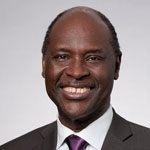This post was originally published on the IntraHealth International blog.
Pape Gaye, president and CEO of IntraHealth International, writes from Recife, Brazil, to friends in Addis Ababa, Ethiopia, in a letter published in Addis Fortune. Take a look:
While Addis Aba ba gears itself up for the third International Conference on Family Planning, I find myself on the other side of the world, nearly 8400 kilometers away, in Recife, Brazil.
ba gears itself up for the third International Conference on Family Planning, I find myself on the other side of the world, nearly 8400 kilometers away, in Recife, Brazil.
As reproductive health policy-makers, advocates, and practitioners are gathering at the African Union in Ethiopia, some of us, who would like to clone ourselves to be there with you—and feel like we are there in spirit—are gathered in Brazil for the Third Global Forum on Human Resources for Health. Read more »
